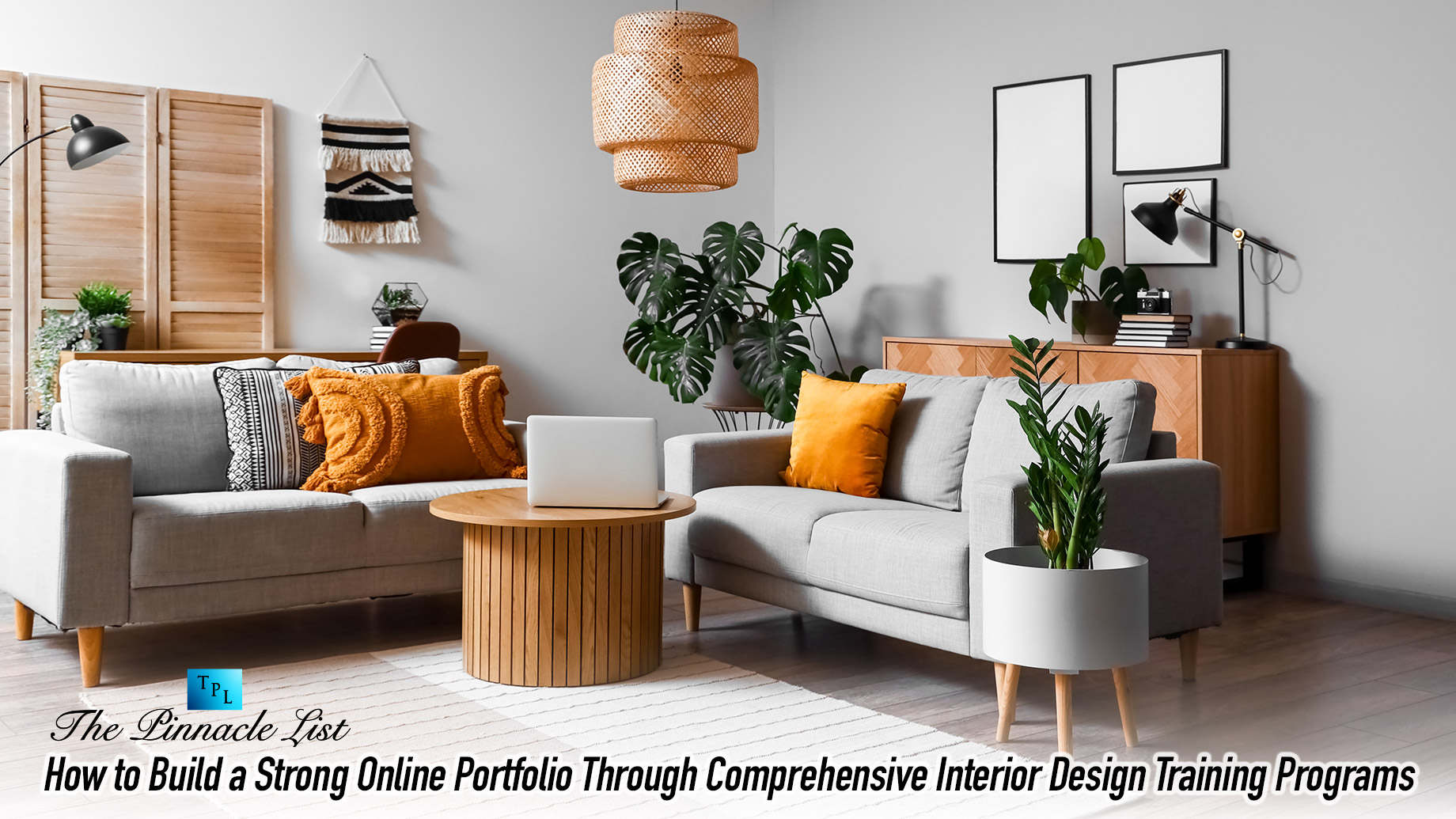
Creating an online portfolio is an essential step for anyone aiming to excel in interior design. A portfolio is more than a collection of work—it showcases creativity, technical ability, and an understanding of design concepts. Comprehensive interior design training programs play a crucial role in helping individuals curate an impressive portfolio. This article outlines effective ways to develop a strong portfolio while leveraging the benefits of structured design education.
Learn Foundational Concepts
A solid foundation is critical for building an online portfolio that stands out. Enrolling in an interior design course is one of the most effective ways to acquire essential knowledge and skills. These programs introduce learners to key principles such as spatial planning, color theory, and material selection.
By understanding the basics, individuals can create cohesive and visually appealing projects. Training courses often include modules that help learners explore design history, styles, and modern trends, enriching their creative vision. This foundational knowledge is instrumental in producing projects that demonstrate a clear understanding of design fundamentals. A strong grasp of these basics further ensures confidence when tackling complex design challenges in the future.
Work on Realistic Projects and Assignments
Practical experience is vital for developing a professional portfolio. Training programs often include project-based learning, allowing students to work on assignments that simulate real-world scenarios. These exercises teach learners how to approach client briefs, create mood boards, and develop functional layouts.
Students can demonstrate their ability to solve design challenges by completing realistic projects. Each assignment adds value to their portfolio, showcasing versatility and problem-solving skills. Besides, these projects give learners the opportunity to experiment with various styles and techniques, helping them find their unique creative voice. Realistic exercises not only enhance learning but also prepare students to handle future client demands effectively.
Incorporate Diverse Styles and Techniques
A well-rounded online portfolio reflects versatility and adaptability. Aspiring designers should include a variety of projects that showcase different styles, such as contemporary, traditional, and minimalist. Comprehensive training programs encourage students to explore multiple approaches, broadening their design perspective.
Including diverse techniques, such as 3D renderings, hand-drawn sketches, and digital layouts, highlights technical proficiency. These elements demonstrate a command of both traditional and modern methods, appealing to a wider range of clients or employers. Diversity in presentation enhances the appeal and shows the designer’s ability to cater to different preferences. Furthermore, it helps to show adaptability, a critical skill in the ever-evolving design industry.
Use Industry-Standard Tools and Software
Proficiency with industry-standard software is essential for creating professional-grade designs. Training programs often teach students how to use tools like CAD (computer-aided design) programs, rendering software, and graphic design applications. These skills are critical for translating ideas into polished, market-ready presentations.
Including projects that incorporate these tools in a portfolio highlights technical competency. It shows potential employers or clients that the designer can handle complex projects using modern technology. Moreover, familiarity with industry-standard software ensures smoother collaboration with other professionals in the field. Mastering these tools also builds efficiency, helping designers meet tight deadlines without compromising quality.
Seek Feedback and Revise Work Regularly
Constructive feedback plays a significant role in refining a portfolio. Training programs often provide opportunities for peer reviews and mentorship from experienced instructors. These insights help learners identify strengths and areas for improvement in their work.
By revisiting and revising projects based on feedback, designers can enhance their portfolio’s quality. Each revision reflects growth and a commitment to excellence. Additionally, regular updates ensure that it stay relevant and aligns with current design trends. Feedback also helps designers evaluate how well their work communicates their ideas and solutions to specific challenges.
Feedback from peers and mentors not only improves individual projects but also builds critical thinking skills. Learning how to analyze and incorporate constructive criticism is a valuable aspect of becoming a successful designer.
Build an Online Portfolio That Reflects Real-World Application
A strong online portfolio should showcase practical applications of design concepts. Training programs often include assignments that mimic real-world scenarios, such as designing a residential space, retail environment, or corporate office. These projects help students understand the balance between creativity and functionality.
Presenting projects with detailed explanations of the thought process and decision-making highlights problem-solving capabilities. Visuals like floor plans, elevations, and material boards add depth to it, giving viewers a comprehensive understanding of the designer’s abilities.
Collaborating with peers during these training programs also allows students to explore teamwork and communication skills. These experiences prepare individuals for the collaborative nature of professional design environments, making them more market-ready. A portfolio with diverse projects and clear explanations demonstrates readiness to tackle complex tasks in real-life scenarios.
An interior design course is instrumental in helping individuals build a professional portfolio that reflects creativity, technical proficiency, and versatility. By focusing on foundational concepts, incorporating diverse styles, and seeking constructive feedback, aspiring designers can craft a portfolio that opens doors to exciting opportunities. A well-rounded collection of work is a testament to dedication and talent, providing the foundation for a successful career in design.